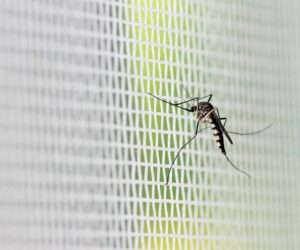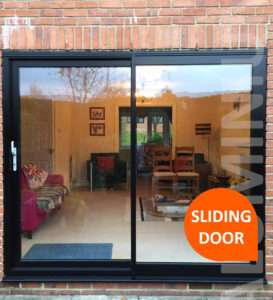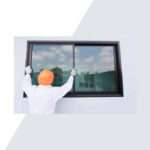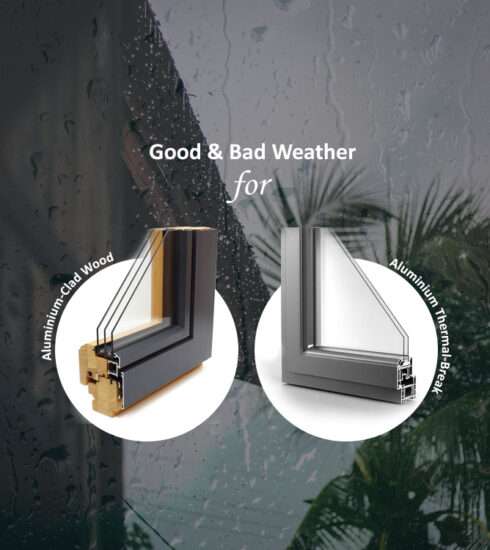Aluminium Vs. uPVC Vs. Wood for Fixed Windows: Explore Options
The choice between several types of windows depends on several factors, including your specific needs, preferences, and the conditions of your location. Each type of window material has its own advantages and disadvantages. Let’s briefly discuss the options we’ve:
Aluminium, Thermal Break, Aluminium-Clad Wood, uPVC, and Wood are different materials used in the construction of fixed picture windows.
Normal Aluminium for Fixed Windows
Aluminium fixed picture windows are known for their durability and lightweight nature. They offer a modern appearance that suits contemporary architectural styles. However, it is essential to consider their poor insulation properties, which could lead to energy inefficiency, particularly in extreme climates. On the upside, aluminium is corrosion-resistant and can be a cost-effective choice.
Advantages: Durable, lightweight, and resistant to corrosion. Can be cost-effective.
Disadvantages: Poor insulation properties compared to other materials, which may lead to energy inefficiency. If you use a rubber gasket, it can help with insulation and reduce outside noise to some extent. However, it may not completely eliminate these factors.
Thermal-Break Aluminium for Fixed Windows
To address the insulation concerns of standard aluminium windows, thermal break aluminium fixed windows incorporate a barrier that reduces heat transfer. This enhancement enhances energy efficiency, making them a favourable choice for those prioritizing sustainability and cost savings. While these windows may be slightly more expensive than standard aluminium, the long-term benefits can outweigh the first investment.
Advantages: Better insulation due to a thermal barrier, reducing heat transfer and potentially improving energy efficiency.
Disadvantages: Can be more expensive than normal aluminum windows.
Aluminium-Clad Wood for Fixed Windows
For those seeking a blend of durability and classic aesthetics, aluminium-clad wood fixed windows offer a unique solution. They combine the robustness of aluminium on the exterior with the warmth and charm of wood on the interior. These windows supply good insulation and can contribute to a cozy atmosphere.
The aluminium exterior acts as a barrier, shielding the wood from direct exposure to rain, snow, and humidity, which are primary causes of rot and decay in wood. This protective layer helps to preserve the integrity of the wood frame, reducing the likelihood of deterioration over time. As a result, aluminium-clad wood windows tend to require less maintenance and are more resistant to issues such as rot and decay, making them a preferred choice for many homeowners seeking both durability and aesthetics.
Advantages: Combines the durability of aluminum on the exterior with the aesthetic appeal of wood on the interior. It provides excellent insulation and a traditional look. Rot and decay are less likely to be problems with aluminium-clad wood fixed windows compared to single wood fixed windows because the aluminium cladding provides an additional layer of protection against moisture and environmental factors.
Disadvantages: Generally, more expensive than some other options.
uPVC for Fixed Windows
Unplasticized Polyvinyl Chloride (uPVC) fixed windows are well-regarded for their good insulation properties. They need minimal maintenance, are affordable, and can suit various architectural styles. While some may find the appearance less appealing compared to other materials finishing, the benefits of uPVC, especially in terms of energy efficiency, cannot be overlooked.
Advantages: Good insulation, low in maintenance, and low in price.
Disadvantages: Some people may find the appearance less appealing compared to other materials. uPVC (unplasticized polyvinyl chloride) is not suitable for larger sizes of fixed windows, with recommendations generally not exceeding 6 feet (1.83 m) in height. Larger windows made entirely of uPVC may experience issues such as:
Structural Integrity: uPVC frames might not be as robust as other materials (like aluminum or timber) for very large openings.
Warping and Bowing: Over time, large uPVC frames can warp or bow due to temperature changes and exposure to sunlight.
Glass Weight: The weight of large glass panes can strain uPVC frames, affecting their longevity.
Wood for Fixed Windows
For those desiring a classic and warm ambiance, single wood fixed windows are an ideal choice. While wood inherently provides good insulation, its susceptibility to rot and decay necessitates regular maintenance. Nevertheless, higher quality wood can mitigate these issues, offering longevity and the option for repair and refinishing.
Advantages: Timeless and visually pleasing, with good insulation properties. Higher quality wood can be long-lasting and repairable.
Disadvantages: Requires more maintenance to prevent rot and decay, as the outer wood surface is exposed and directly affected by external temperatures and weather conditions. Additionally, the initial cost may be higher, particularly for high-quality wood materials.
Making Your Decision
Selecting the right fixed window material depends on a variety of factors, including budget, location, aesthetics, and maintenance preferences. If energy efficiency is crucial, thermal-break aluminium might be your best bet. For those valuing a harmonious blend of aesthetics and functionality, aluminium-clad wood could be appealing. Ultimately, the decision is a balance between short-term costs and long-term benefits.
In conclusion, fixed windows come in a range of materials, each with its own set of advantages and drawbacks. For larger windows, consider like aluminum frames, which offer better structural support. Always consult with professionals to choose the right window material and size for your specific needs.










